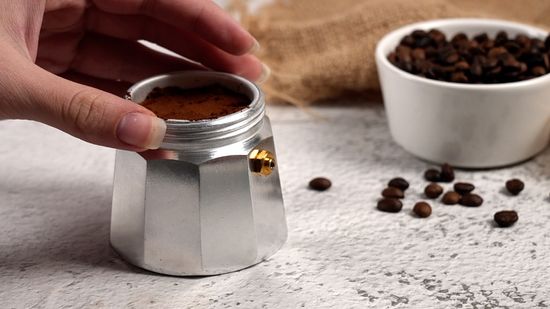Are you tired of dealing with stained coffee maker pots? In this article, you will learn some simple yet effective ways to prevent those unsightly stains from taking over your beloved coffee pots. By incorporating these easy tips into your routine, you can keep your coffee maker looking sparkling clean and ready to brew your favorite cup of joe without any hassle. Let’s dive in and discover how to keep your coffee maker pots stain-free! How Do You Prevent Coffee Maker Pots From Staining?
Have you ever noticed unsightly stains in your coffee maker pot that just won’t budge no matter how much you scrub? The good news is that there are several preventative measures you can take to keep your coffee maker pot looking clean and pristine. By following some simple tips and tricks, you can ensure that your coffee maker pot stays stain-free for many brews to come. Let’s dive into some effective ways to prevent coffee maker pots from staining.
Choose the Right Water
The quality of water you use in your coffee maker can play a significant role in preventing stains in the pot. Hard water, which contains high levels of minerals like calcium and magnesium, can leave behind mineral deposits that can lead to staining over time. To prevent this, opt for filtered or distilled water when brewing your coffee. Filtered water removes impurities and minerals, resulting in a cleaner-tasting coffee and a cleaner pot.
Using filtered or distilled water can help reduce mineral buildup in your coffee maker pot, preventing stains and extending the lifespan of your appliance.
Consider using a water softener if you have hard water coming out of your tap. A water softener can help reduce mineral content in the water, which in turn can help prevent staining in your coffee maker pot.
Regular Cleaning and Maintenance
Proper maintenance and regular cleaning are essential for preventing stains in your coffee maker pot. Over time, coffee oils and residue can build up in the pot, leading to discoloration and staining. To keep your coffee maker pot looking its best, make sure to clean it thoroughly after each use.
After brewing a pot of coffee, rinse the pot with warm, soapy water to remove any coffee residue.
For tough stains, create a mixture of equal parts vinegar and water and allow it to sit in the pot for a few hours before scrubbing with a non-abrasive sponge.
Avoid Leaving Coffee in the Pot for Extended Periods
Leaving brewed coffee sitting in the pot for an extended period of time can lead to stains and residue buildup. The longer coffee sits, the more time it has to cool and oxidize, which can result in discoloration and staining. To prevent this, try to brew only the amount of coffee you will drink immediately, and avoid letting it sit in the pot for longer than necessary.
Pour any leftover coffee into a thermos to keep it hot and fresh, rather than leaving it in the pot.
If you do need to leave coffee in the pot for an extended period, make sure to clean the pot promptly afterwards to prevent stains from setting in.
Use Baking Soda as a Natural Cleaner
Baking soda is a versatile and all-natural cleaner that can effectively remove stains and residue from your coffee maker pot. Its gentle abrasive properties help to scrub away buildup without damaging the surface of the pot. To use baking soda as a cleaner for your coffee maker pot, simply create a paste by mixing baking soda with a small amount of water, apply it to the stained areas, and scrub with a sponge or brush.
Baking soda is a safe and effective alternative to harsh chemical cleaners that can damage the surface of your coffee maker pot.
Regularly using baking soda to clean your coffee maker pot can help prevent stains and keep it looking like new.
Consider Using a Coffee Maker Descaler
Over time, mineral deposits can accumulate in your coffee maker pot, leading to staining and discoloration. To combat this buildup, consider using a coffee maker descaler to remove mineral deposits and prevent stains. Descalers are formulated to break down mineral deposits and clean the internal components of your coffee maker, including the pot.
Follow the manufacturer’s instructions for using a coffee maker descaler to ensure safe and effective cleaning.
Using a coffee maker descaler regularly can help extend the lifespan of your coffee maker and prevent staining in the pot.
Opt for Glass or Stainless Steel Coffee Maker Pots
The material of your coffee maker pot can also impact its susceptibility to staining. Glass and stainless steel pots are less likely to develop stains compared to plastic pots, which can absorb odors and colors from coffee over time. Opting for a glass or stainless steel coffee maker pot can not only prevent staining but also ensure a cleaner and more hygienic brewing experience.
Glass and stainless steel coffee maker pots are more resistant to stains and odors compared to plastic pots.
Consider investing in a high-quality glass or stainless steel coffee maker pot for a long-lasting and stain-free brewing experience.
Conclusion
Preventing stains in your coffee maker pot doesn’t have to be a difficult task. By following the tips and tricks outlined in this article, you can ensure that your coffee maker pot stays clean, pristine, and stain-free for many brews to come. From choosing the right water to using natural cleaners like baking soda, taking proactive measures to prevent stains can help you enjoy a fresh and flavorful cup of coffee every time you brew. So, say goodbye to stubborn coffee stains and hello to a sparkling clean coffee maker pot!




